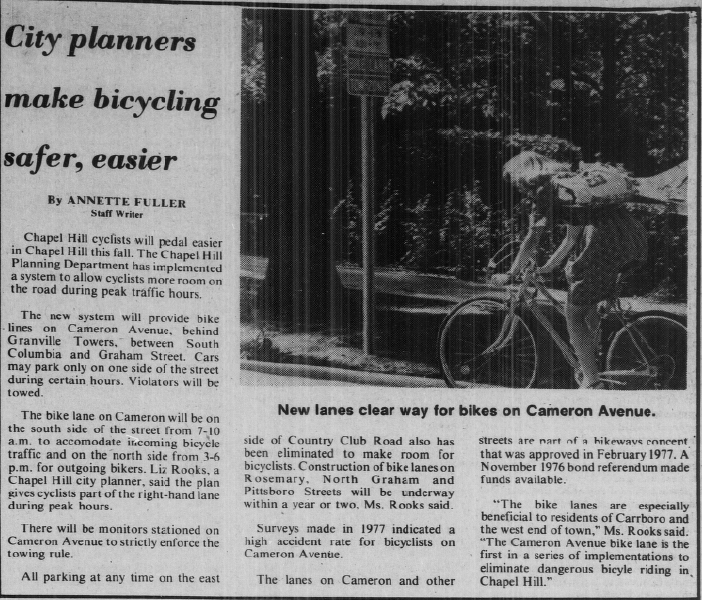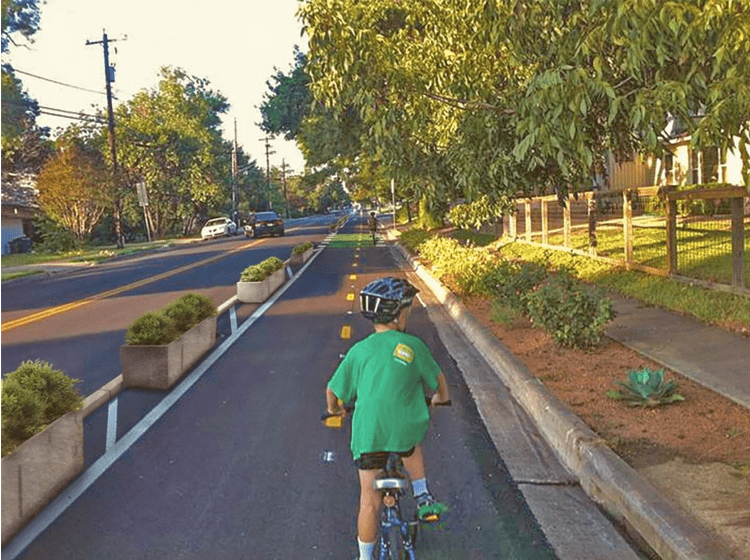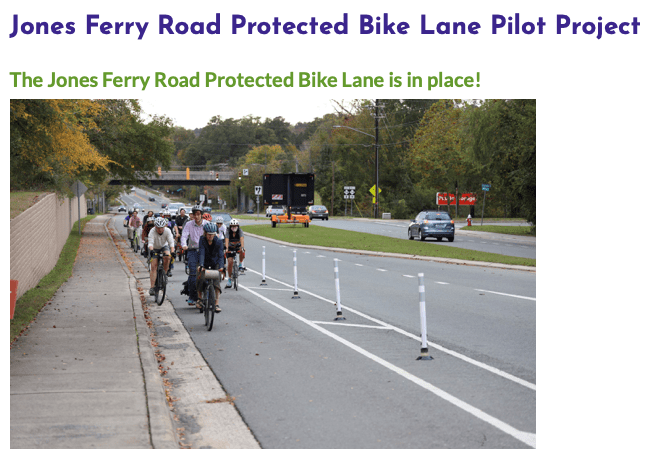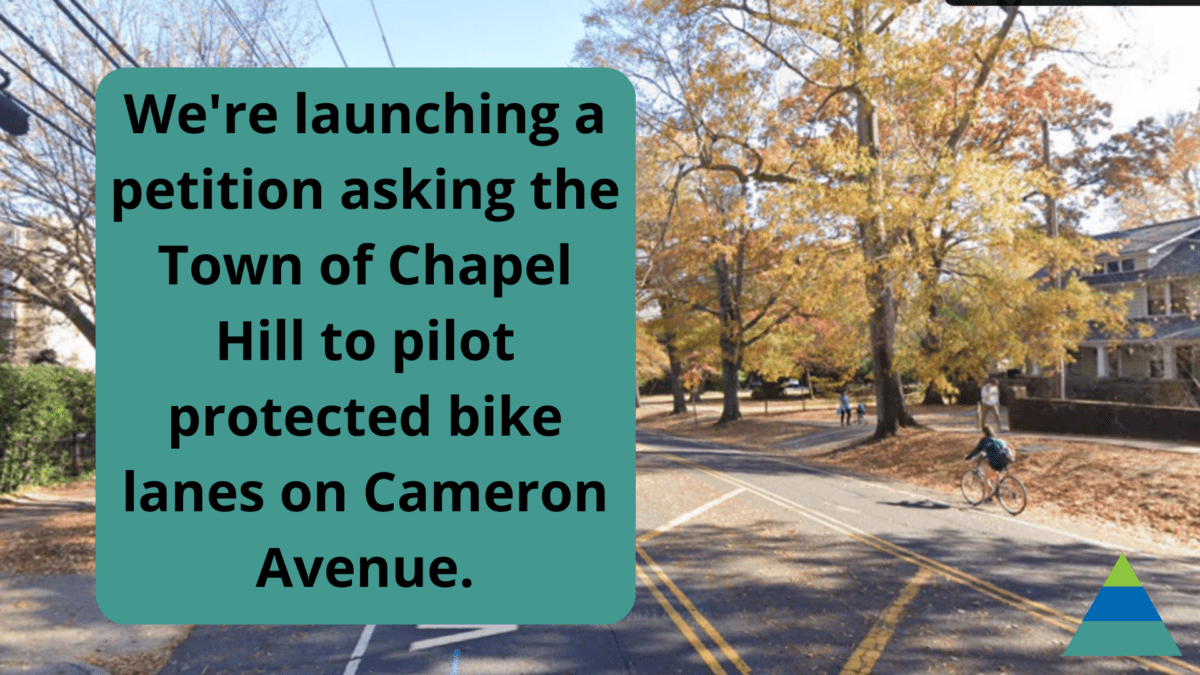We are launching a petition asking the Town of Chapel Hill to pilot protected bike lanes on Cameron Avenue. With enough support, we believe we can get better bike lanes on Cameron in the next six months, not two years.
In 1978, the Town of Chapel Hill opened its first bike lane. Located along Cameron Avenue, from South Columbia to Graham Street, the bike lane was open six hours a day. Parked cars were required to move to accommodate bicycle traffic from Carrboro, and “monitors” were set up along the street to ensure that cars moved out of the way during the morning and evening rush hour.

Since then, Chapel Hill has upgraded its downtown bike network in fits and starts. About a decade ago, we added bike lanes on Rosemary and, last summer, we added curb-running bike lanes on Franklin Street. Even these small steps took a lot of effort, requiring impassioned pleas for funding and drawn-out negotiations with people who think a few parking spaces are more important than safety.
Last September, NEXT Chapel Hill-Carrboro petitioned the Chapel Hill Town Council to ask them to build protected bike lanes on Cameron Avenue. Protected bike lanes have a physical barrier that separates people on bicycles, motorized wheelchairs, and scooters from cars and trucks. They’re much safer than the painted bike lanes that Cameron has now and encourage people of all ages and abilities to bike, which is good for the environment, the economy, and public health.

After the NEXT petition was submitted to council, town staff asked the council for permission to begin planning for protected bike lanes on Cameron. But, before that process got started, the council decided to conduct a Multimodal Mobility Study that will consider how people get around downtown, including on our three main thoroughfares—Franklin, Rosemary, and Cameron.
Last spring, the town completed the initial stages of its study, but did not include Cameron in their plans. Meanwhile, the Town of Chapel Hill was awarded $720,000 in federal funding, with a $180,000 local match, to “design and construct protected bike lanes on Cameron Avenue between the Libba Cotten bikeway and UNC Campus.”
According to an August 12, 2023, email sent by town manager Chris Blue, town staff will begin the design and engineering process this year, but because federal funds are being used, it will take almost two years for the process to be complete.
Meanwhile, Cameron Avenue is in terrible condition. Last year, OWASA dug up significant sections of the street, and while they’ve patched some of the worst spots, the street remains very bumpy, which is particularly hard for people riding a bike, using a mobility scooter, or walking. (The sidewalks on Cameron are also in bad shape, uneven in many places, so some people walk on the street instead).
While we wait for the permanent protected bike lanes to be installed, the Town Of Chapel Hill should conduct a pilot project, building protected bike lanes for Cameron in the next six months that can be made permanent later. (This is what Carrboro did two years ago).

Pilot projects are not permanent, but they have many advantages:
- They can be installed quickly. Using construction cones or barriers, we can make a protected bike lane in a matter of hours or days.
- They can be adjusted as necessary. Unlike permanent road changes, which involve installing infrastructure, like concrete barriers, that aren’t easy to move, pilot projects can be adjusted as necessary.
- They show that governments can work quickly and creatively. Many government projects, including building better bike infrastructure, take years, in part because so many hurdles have to be jumped before construction can begin. Because pilot projects are designed to be temporary, governments can be flexible and creative.
We are launching a petition asking the Town of Chapel Hill to pilot protected bike lanes on Cameron Avenue. With enough support, we believe we can get better bike lanes on Cameron in the next six months, not two years.
How you can help
- Sign the petition. Our goal is to reach 1000 signatures before submitting to Town Council.
- Share the petition or this blog post with friends who bike or walk to UNC.
- Consider writing for Triangle Blog Blog. Reach out to us ([email protected]) if you’d like to write about transportation infrastructure or ways we can improve our towns for pedestrians and bikers.

